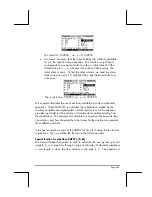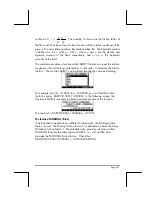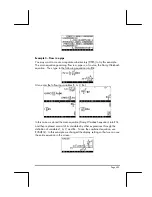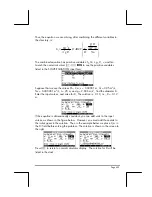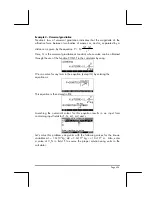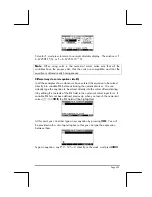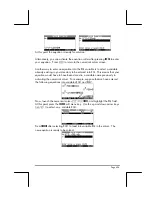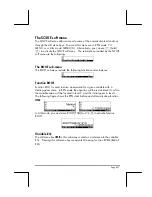
Page 6-12
This means that at the end of 60 months the US $ 2,000,000.00 principal
amount has been paid, together with US $ 347,937.79 of interest, with the
balance being that the lender owes the borrower US $ 0.000316. Of
course, the balance should be zero. The value shown in the screen above is
simply round-off error resulting from the numerical solution.
Press
$
or
`
,
twice, to return to normal calculator display.
Example 3 – Calculating payment with payments at beginning of period
Let’s solve the same problem as in Examples 1 and 2, but using the option
that payment occurs at the beginning of the payment period. Use:
„Ò
Start the financial calculation input form
60
@@OK@@
Enter n = 60
6.5
@@OK@@
Enter I%YR = 6.5 %
2000000
@@OK@@
Enter PV = 2,000,000 US$
˜
Skip PMT, since we will be solving for it
0
@@OK@@
Enter FV = 0, the option
End
is highlighted
@@CHOOS !
—
@@OK@@
Change payment option to
Begin
— š
@@SOLVE!
Highlight PMT and solve for it
The screen now shows the value of PMT as –38,921.47, i.e., the borrower
must pay the lender US $ 38,921.48 at the
beginning
of each month for the
next 60 months to repay the entire amount. Notice that the amount the
borrower pays monthly, if paying at the beginning of each payment period, is
slightly smaller than that paid at the end of each payment period. The reason
for that difference is that the lender gets interest earnings from the payments
from the beginning of the period, thus alleviating the burden on the lender.
Notes
:
1. The financial calculator environment allows you to solve for any of the
terms involved, i.e., n, I%YR, PV, FV, P/Y, given the remaining terms in the
loan calculation. Just highlight the value you want to solve for, and press
@@SOLVE!
.
The result will be shown in the highlighted field.























